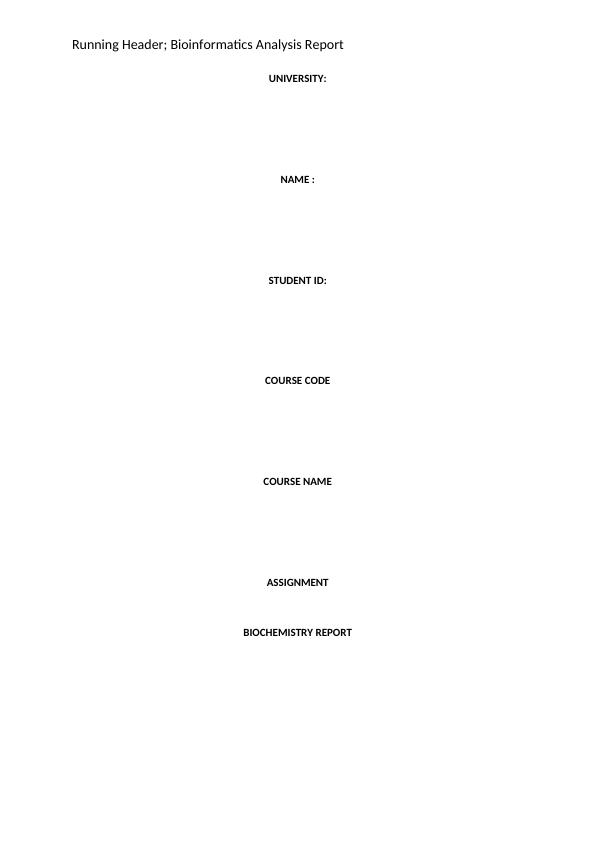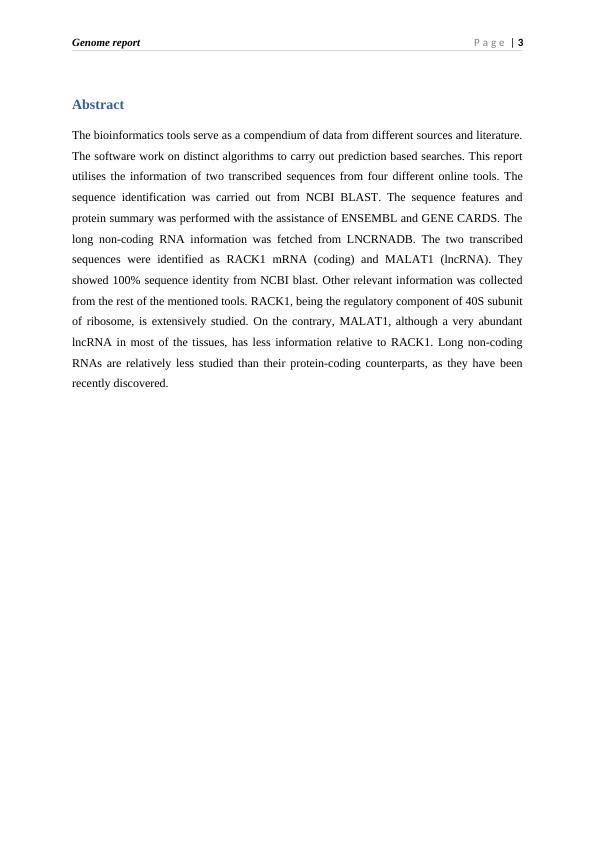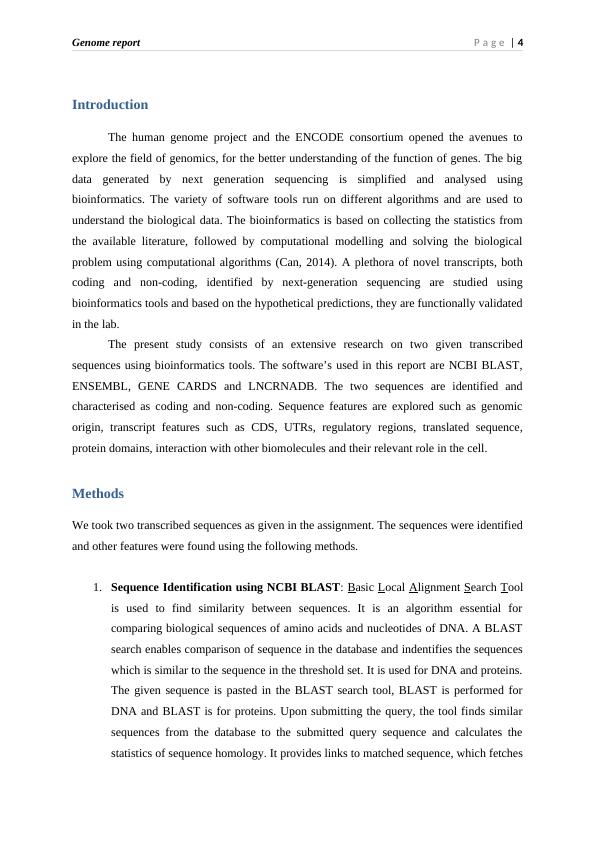Bioinformatics Analysis Report
Design and conduct an investigation to identify and characterise transcribed gene sequences using online bioinformatics tools and communicate the results and interpretation in the form of a scientific paper.
16 Pages4557 Words214 Views
Added on 2023-06-15
About This Document
The report utilises the information of two transcribed sequences from four different online tools. The sequence identification was carried out from NCBI BLAST. The sequence features and protein summary was performed with the assistance of ENSEMBL and GENE CARDS. The long non-coding RNA information was fetched from LNCRNADB.
Bioinformatics Analysis Report
Design and conduct an investigation to identify and characterise transcribed gene sequences using online bioinformatics tools and communicate the results and interpretation in the form of a scientific paper.
Added on 2023-06-15
ShareRelated Documents
End of preview
Want to access all the pages? Upload your documents or become a member.
Bioinformatics Assignment Sample
|56
|10564
|54
Gycine max between different species
|5
|469
|36
Bioinformatics And Genetics
|8
|1509
|19
BIOINFORMATICS STEP BY STEP ANALYSIS
|4
|294
|21
Bioinformatics: Storing and Searching Genetic Information
|15
|2928
|245
Genomics and Bioinformatics Lab
|4
|1271
|407




